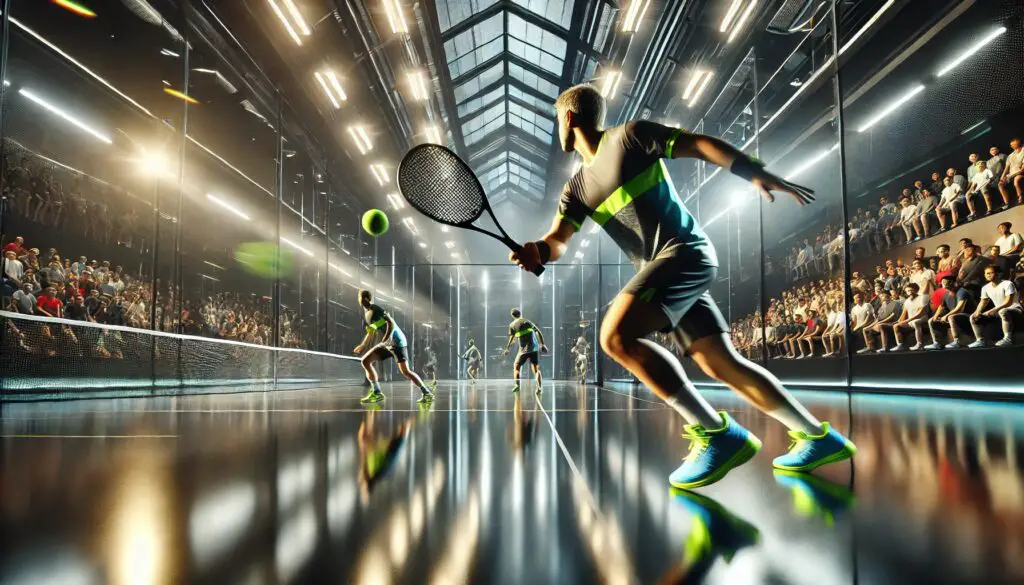The Ultimate Guide to Rapid Ball: A Dynamic Sport Shaping the World

Rapid Ball has emerged as one of the most exhilarating sports in the modern world. Known for its fast pace and strategic gameplay, the sport has captivated millions globally. From its humble beginnings to its current status as a professional phenomenon, it has woven itself into the fabric of societies worldwide. In this blog post, we will explore the origins of this remarkable sport, its global popularity, the role it plays in schools and communities, its professional leagues, and the profound political and social significance it holds. Additionally, we will dive into the rules that define its unique identity.
The Origin and History of Rapid Ball
The origins of Rapid Ball trace back to the late 20th century. Invented in 1978 by physical education instructor Carl Donovan, the game was initially designed as a training exercise for athletes. Donovan aimed to create a sport combining the agility of basketball, the strategy of soccer, and the intensity of handball. Early games were played using makeshift courts and improvised equipment, primarily in local community centers.
By the 1980s, it began gaining recognition. Schools and colleges started adopting the game as part of their physical education programs. Its inclusive nature and adaptability made it appealing to players of all ages. During this time, official rules were standardized, paving the way for organized competitions. The establishment of the first national league in 1992 marked a pivotal moment in its history.
The 21st century witnessed Rapid Ball’s global expansion. International tournaments, such as the World Rapid Ball Championship, elevated its status. As it spread to continents like Asia, Africa, and South America, the sport adapted to local cultures, enhancing its universal appeal. Today, Rapid Ball is played in over 70 countries, with millions of players and fans embracing its energy.
Global Popularity of Rapid Ball
Rapid Ball’s rise to global prominence can be attributed to its accessibility and entertainment value. The sport’s fast pace keeps audiences engaged, while its straightforward rules make it easy to understand. Major countries where Rapid Ball thrives include the United States, Germany, Brazil, Japan, and South Korea. Each region brings its unique flavor to the game.
In Europe, it has a robust following, particularly in Germany and France. The European Rapid Ball League (ERBL) attracts top talent and boasts millions of spectators annually. In South America, Brazil leads the charge with vibrant local leagues and fervent fanbases. Asia, meanwhile, has seen rapid growth in countries like Japan and South Korea, where youth programs drive participation.
Television and digital media have also played a crucial role in spreading the sport’s appeal. Live streaming of matches allows fans from remote areas to stay connected. Social media platforms serve as hubs for players and enthusiasts to share highlights, strategies, and updates. As a result, the global Rapid Ball community continues to expand.
Amateur Rapid Ball: Youth and Schools
Amateur Rapid Ball forms the backbone of the sport’s ecosystem. Many young players are introduced to the game in schools, where it is a staple of physical education curricula. Teachers often praise the sport for fostering teamwork, coordination, and physical fitness. Schools organize intramural competitions, nurturing talent and enthusiasm at the grassroots level.
Community centers and sports clubs provide additional opportunities for amateur play. Weekend leagues and recreational matches allow enthusiasts of all ages to participate. These settings often emphasize inclusivity, making Rapid Ball a favorite among diverse groups.
Youth development programs play a significant role in sustaining interest in the sport. Many countries have established academies dedicated to training young athletes. Scholarships and sponsorships further motivate participation. For instance, Japan’s Junior Rapid Ball Initiative has produced several players who now compete professionally.
Professional Leagues and Tournaments
Professional leagues have taken Rapid Ball to new heights. The sport’s competitive scene is vibrant, with regional, national, and international leagues captivating audiences. The World Rapid Ball Federation (WRBF) governs the professional aspect of the sport, ensuring consistency across leagues.
The United States boasts the Rapid Ball Professional League (RBPL), which features some of the world’s best players. In Europe, the ERBL remains a powerhouse, showcasing thrilling matches between elite teams. South America’s Liga Rapida is equally prominent, with Brazil leading in championship wins.
International tournaments bring together top talent from around the globe. The World Rapid Ball Championship, held every four years, is the pinnacle event. Regional competitions like the Asian Rapid Ball Cup and the Pan-American Rapid Ball Championship further promote the sport.
The rise of professional Rapid Ball has also attracted significant sponsorships. Companies invest heavily in teams, players, and events, contributing to the sport’s economic growth. Merchandise sales, including jerseys and equipment, add another layer of commercial success.
Political and Social Significance
Rapid Ball’s influence extends beyond the court, playing a significant role in political and social spheres. The sport often serves as a unifying force in divided communities. Its inclusive nature promotes diversity and breaks down barriers.
In conflict zones, it has been used as a tool for peacebuilding. International organizations collaborate with local groups to organize tournaments, fostering dialogue and understanding among participants. For instance, Rapid Ball tournaments in post-conflict regions of Africa have brought together youth from opposing factions, promoting reconciliation.
Socially, the sport has become a platform for advocacy. Campaigns addressing issues such as gender equality, mental health, and education frequently use Rapid Ball events to amplify their message. Female participation in the sport has also grown, challenging traditional norms and inspiring future generations.
The Rules of Rapid Ball
Rapid Ball is played on a rectangular court with two teams, each consisting of five players. The objective is to score points by throwing the ball into the opposing team’s goal. Matches typically last 40 minutes, divided into two 20-minute halves.
The game begins with a face-off at the center of the court. Players can pass, dribble, or shoot the ball but must adhere to specific rules. Physical contact is limited, ensuring player safety while maintaining competitive integrity.
Scoring occurs when the ball is successfully thrown into the opponent’s goal. A standard goal is worth two points, while shots made from beyond the designated arc earn three points. Defensive players aim to block shots and intercept passes without committing fouls.
Substitutions are unlimited and can be made during stoppages. This rule allows teams to maintain high energy levels throughout the match. Penalties are enforced for infractions such as illegal contact or unsportsmanlike behavior. Penalty shots provide the offended team with an opportunity to score uncontested points.
The simplicity of these rules ensures accessibility for new players while offering depth for advanced strategies. Coaches and players develop innovative tactics, adding layers of excitement to each match.
Conclusion
Rapid Ball’s journey from a modest training exercise to a global phenomenon is nothing short of inspiring. Its universal appeal, fueled by accessibility and thrilling gameplay, continues to attract players and fans alike. Whether through amateur leagues, professional competitions, or social initiatives, the sport leaves an indelible mark on individuals and communities worldwide.
By embracing Rapid Ball, players learn valuable life skills such as teamwork, resilience, and leadership. For fans, it provides endless entertainment and a sense of belonging. As the sport continues to grow, its impact on the world—both on and off the court—will only deepen. Indeed, Rapid Ball is more than a game; it is a force for unity and progress.




